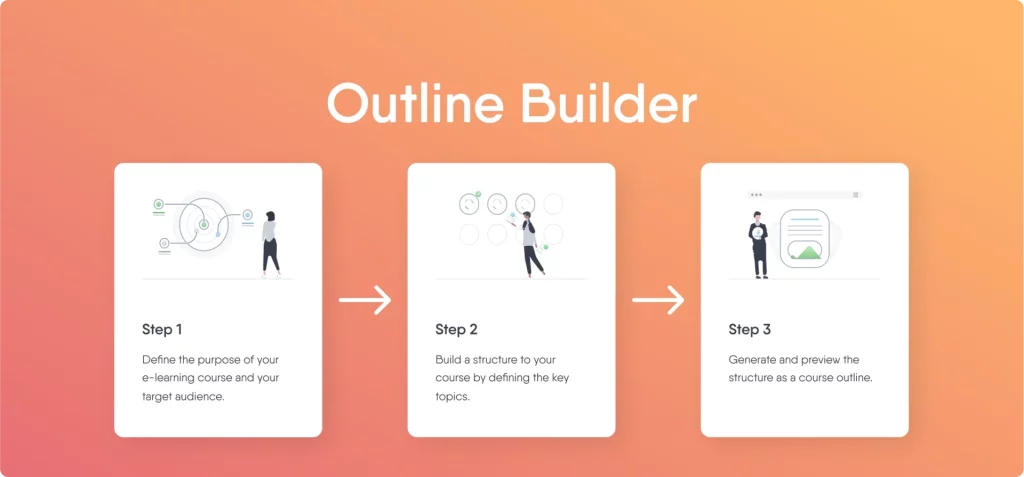How to keep your corporate learning content updated
Employees are better aware of the changes happening in your business. So, who is better equipped to keep your learning content up-to-date – L&D or SMEs?

Change is inevitable – in life and in business too. And change can affect all aspects of a company – processes, procedures, policies, technologies, market forces, growth… the list goes on.
To keep up with these changes, learning content needs to constantly adapt. Sometimes, a small update will do. But other times, you may need to do an entire revamp to an e-learning course.
Outdated training content can have a serious impact on employee performance and productivity. This, in turn, will impact your bottom line. Additionally, working with outdated content can have costly consequences for your employees – be it in performance, decision-making or even morale.
For example, if your company works in manufacturing and you have constantly evolving machinery, it becomes crucial that you update your training content as soon as a feature is enhanced or a bug is fixed. Otherwise, your employees will be left confused and run into mistakes due to the outdated learning content, resulting in a waste of time and effort. This is even more relevant in highly regulated environments where compliance is a must to ensure safety and wellbeing.
Why learning content becomes outdated
Most companies agree on the importance of maintaining learning content up to date. But what happens when you go from theory to practice?
Expand your L&D capacity
With Employee-Generated Learning, you can scale your training output using a fraction of your L&D budget.
The truth is centralized L&D teams alone struggle to keep up with the numerous changes occurring across the business. Depending on the nature of the business, these changes can be annual, quarterly, or even monthly. In a fast-paced business, the sheer volume of updates can be daunting. Plus, on top of these updates, L&D teams are still being requested to create new training materials to meet skills gaps across the business.
Many organizations look to external vendors to keep up with the pace of change. But relying on third parties to update learning content is also a time-consuming process that still requires input from L&D.
So, how can organizations keep up?
How Employee-generated Learning helps you keep learning content up to date
What if you didn’t have to rely on a centralized L&D team to update your learning content?
Your employees are the ones working in the business. So, they know when learning content is outdated. If your L&D team is overwhelmed, just leave the knowledge where it is – in the business. We call this Employee-generated Learning.
In a nutshell, Employee-generated Learning is an L&D model that shifts the responsibility of content creation from L&D to your employees. They are the ones who hold all the expertise and the knowledge that you wish to share.
And because your employees – or subject matter experts (SMEs) – are the ones creating the learning content, they’re also responsible for keeping that learning content up to date. This creates a more agile, reliable, and faster process to keep all learning content updated.
See how Danone started learning at the speed of business by embracing Employee-generated Learning.
6 Tips to keep learning content updated
1. Turn your SMEs into content creators
We’ve said it before and we’ll say it again. It’s time to give the employees in the business ownership over the content creation process. This way, they’ll also feel ownership to update that content when a change takes place.
2. Select easy-to-use tools
Your SMEs need a simple tech stack to maintain content easily and quickly on their own. This way, you’ll effectively remove the back-and-forth with a central L&D team or third-party vendor for any minor update. Now, it’s just easy and quick to make the update.
3. Establish clear ownership
Make it clear across your company who created each course. This way, learners who spot outdated content can easily flag it with the owner who can then update it.
4. Create a review process
Always encourage authors to collaborate on learning content with their peers. This ensures that there will always be more than one person responsible for updating learning content. Additionally, make sure to determine who will be responsible for the learning content if the main author is not available or leaves the organization.
5. Plan regular review sessions
A key part of the training planning process is to ensure that you schedule regular review sessions. Set aside some time for each training material so that your SMEs can also be proactive in spotting outdated content.
6. Ask for feedback
Run a poll or survey your employees to understand their specific knowledge gaps and needs. This will help you identify key areas where they need help and which piece of learning content you need to update to address it.


